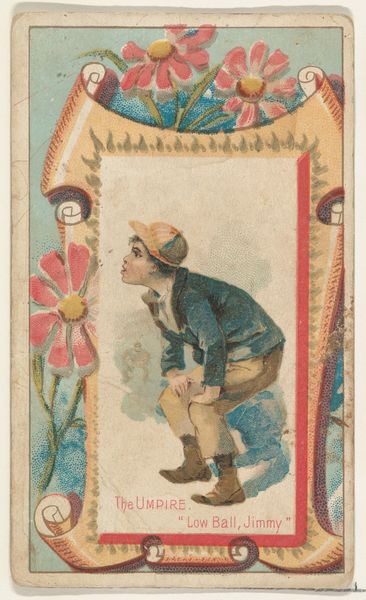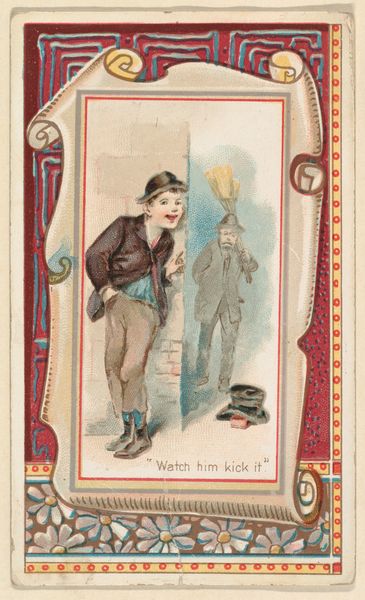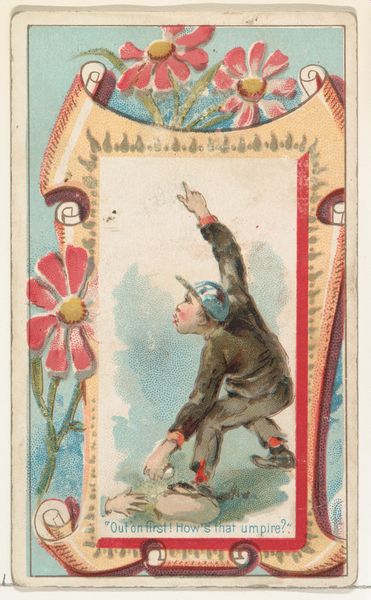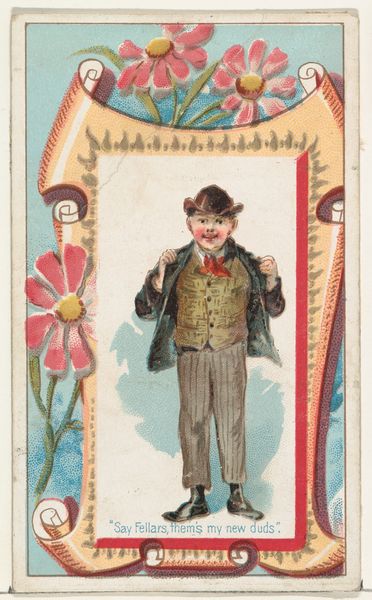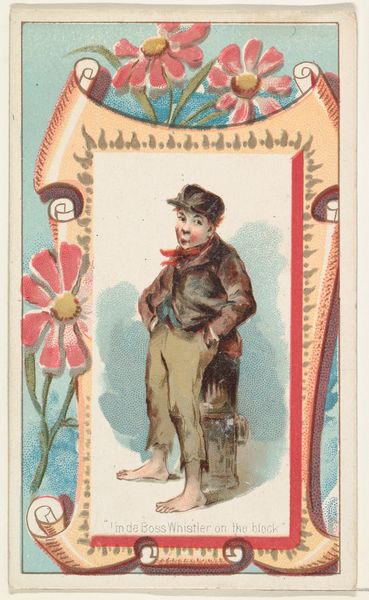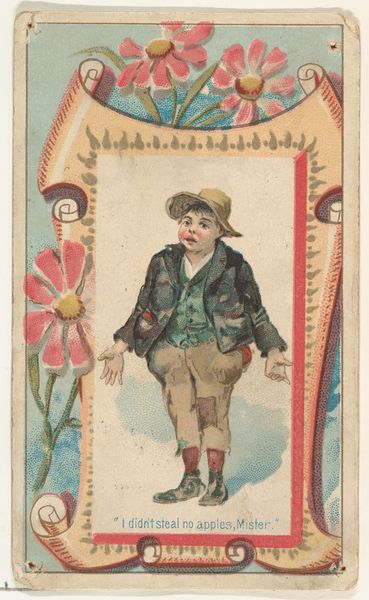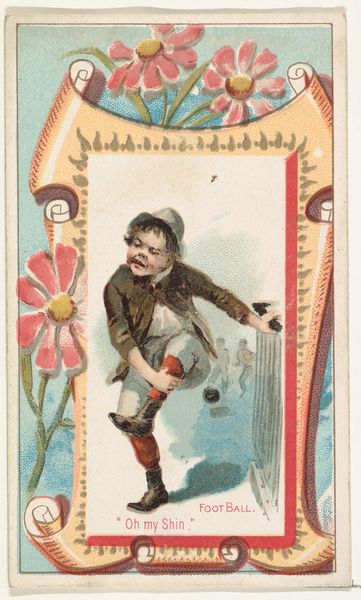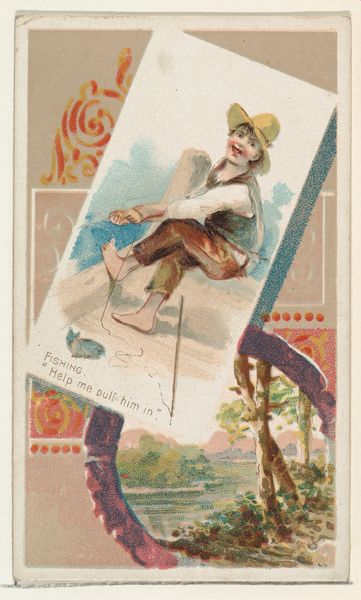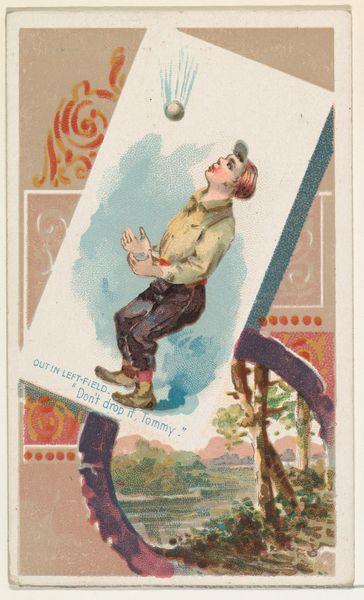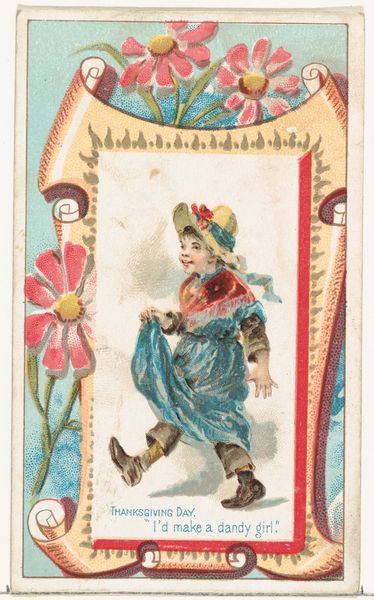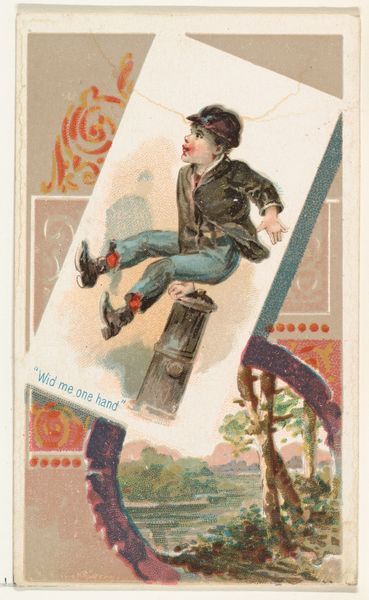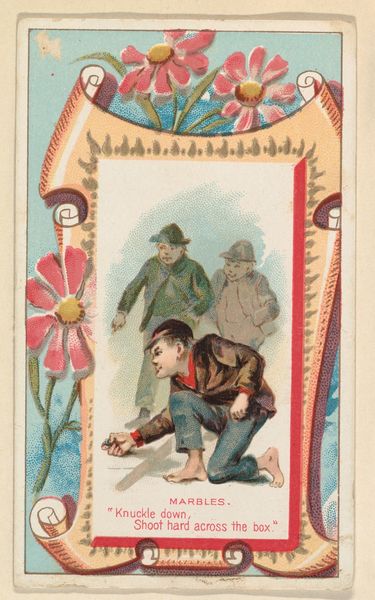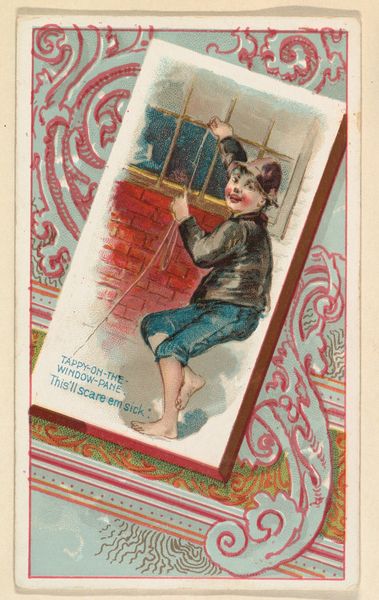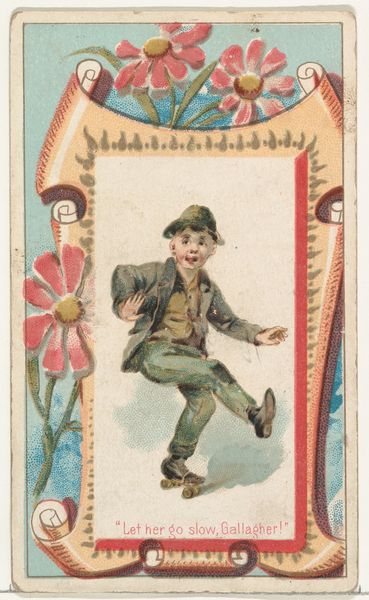
"Watch him kick it," from the Terrors of America set (N136) issued by Duke Sons & Co. to promote Honest Long Cut Tobacco 1888 - 1889
0:00
0:00
drawing, coloured-pencil, print
#
drawing
#
art-nouveau
#
coloured-pencil
# print
#
caricature
#
coloured pencil
#
men
#
art nouveau
#
genre-painting
Dimensions: Sheet: 2 3/4 x 1 1/2 in. (7 x 3.8 cm)
Copyright: Public Domain
Curator: Let's discuss this fascinating print: “Watch him kick it,” from the Terrors of America set, created around 1888-1889 by W. Duke, Sons & Co. to promote their Honest Long Cut Tobacco. Editor: Immediately, I'm struck by its playful mischievousness! The candy-colored palette softens what I suspect might be quite an act of social disruption. The materials look like coloured pencil and some kind of printing technique...it reminds me of printed ephemera. Curator: Indeed. These were trade cards, designed to be collected. Duke, Sons & Co. aimed to reach a broad audience, embedding cultural narratives into everyday consumer goods. Notice how "genre-painting" is miniaturized here, rendered accessible to a rising middle class through tobacco consumption. The very phrase “Terrors of America” signals a fascination with the subversive, doesn’t it? Editor: Subversive, or a sanitized version of it. Look at the boy’s clothing, deliberately disheveled, suggesting a sort of constructed rebellion tied directly to their branding and market segmentation. The materiality and accessibility made the cards disposable. Curator: The "Art Nouveau" aesthetic, however, elevates the everyday—these bright floral elements, this elaborate border. Editor: Exactly! Art Nouveau here serves a dual purpose. On the one hand it is fashionable and sophisticated to appeal to buyers; but on the other, it ironically frames an otherwise "low-brow" prank, adding layers of irony. What are they kicking, do we know? Curator: The "kick" remains ambiguous but there are several hats right near the figure he may be planning to surprise, maybe his or his community’s frustration with societal restrictions and the plight of certain laborers and disenfranchised folks during this industrial era. Editor: Yes, so that element is key here; in this material culture perspective, the mass-produced, easily consumed artwork becomes an avenue for distributing social messaging, be it advertising for revenue or promoting a certain attitude towards labor or rebellion... all under the thin disguise of cartoonish characters. Curator: Absolutely, and it raises questions about the role of consumerism in shaping social values and desires, and about how political narratives are popularized, distorted, and eventually, consumed by everyday citizens. Editor: Precisely! It's this tension between artistry and accessibility, rebellion and constraint, which reveals a nuanced portrayal of late 19th-century American society. Thanks for this insightful examination! Curator: The pleasure was all mine!
Comments
No comments
Be the first to comment and join the conversation on the ultimate creative platform.
